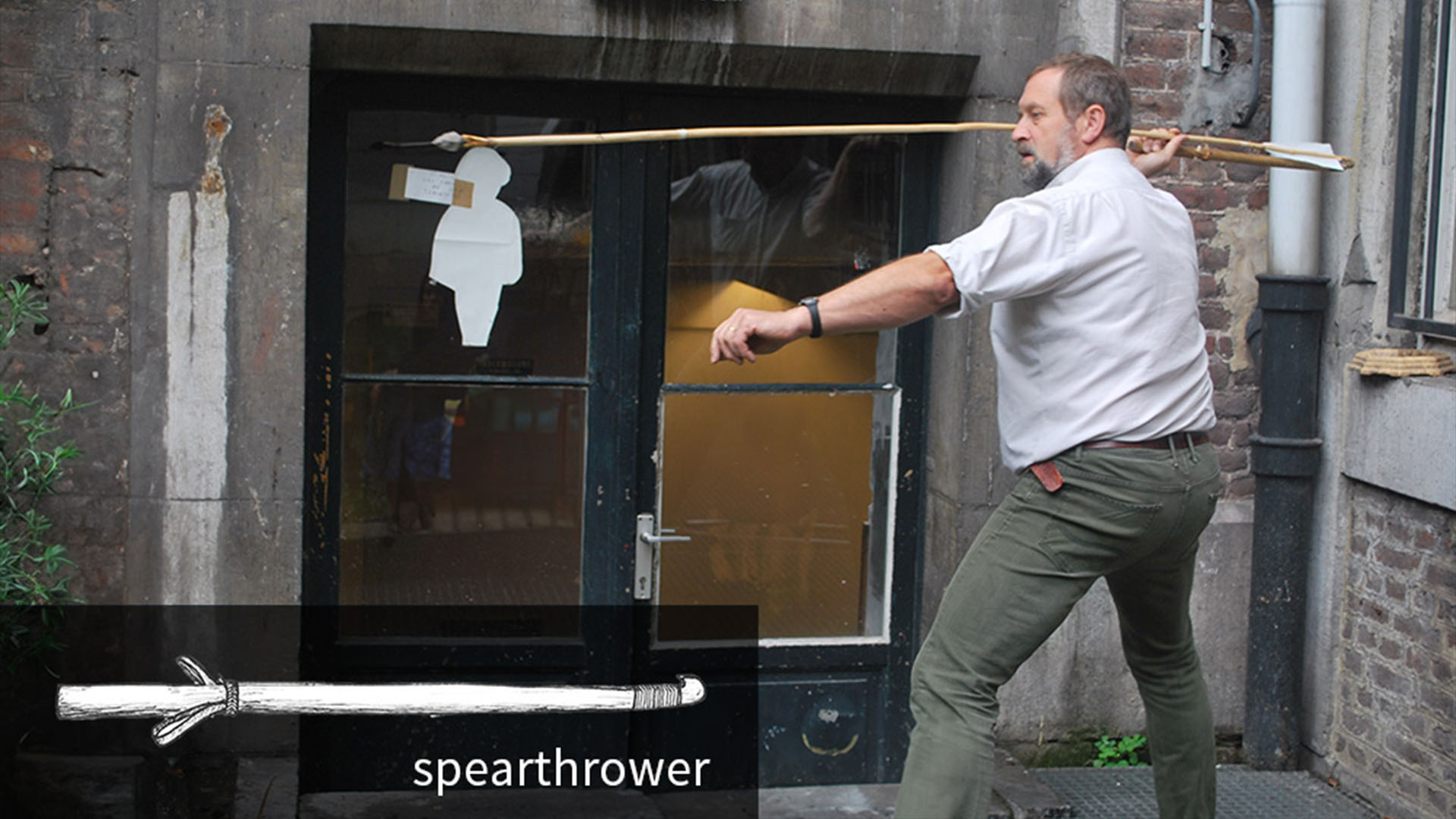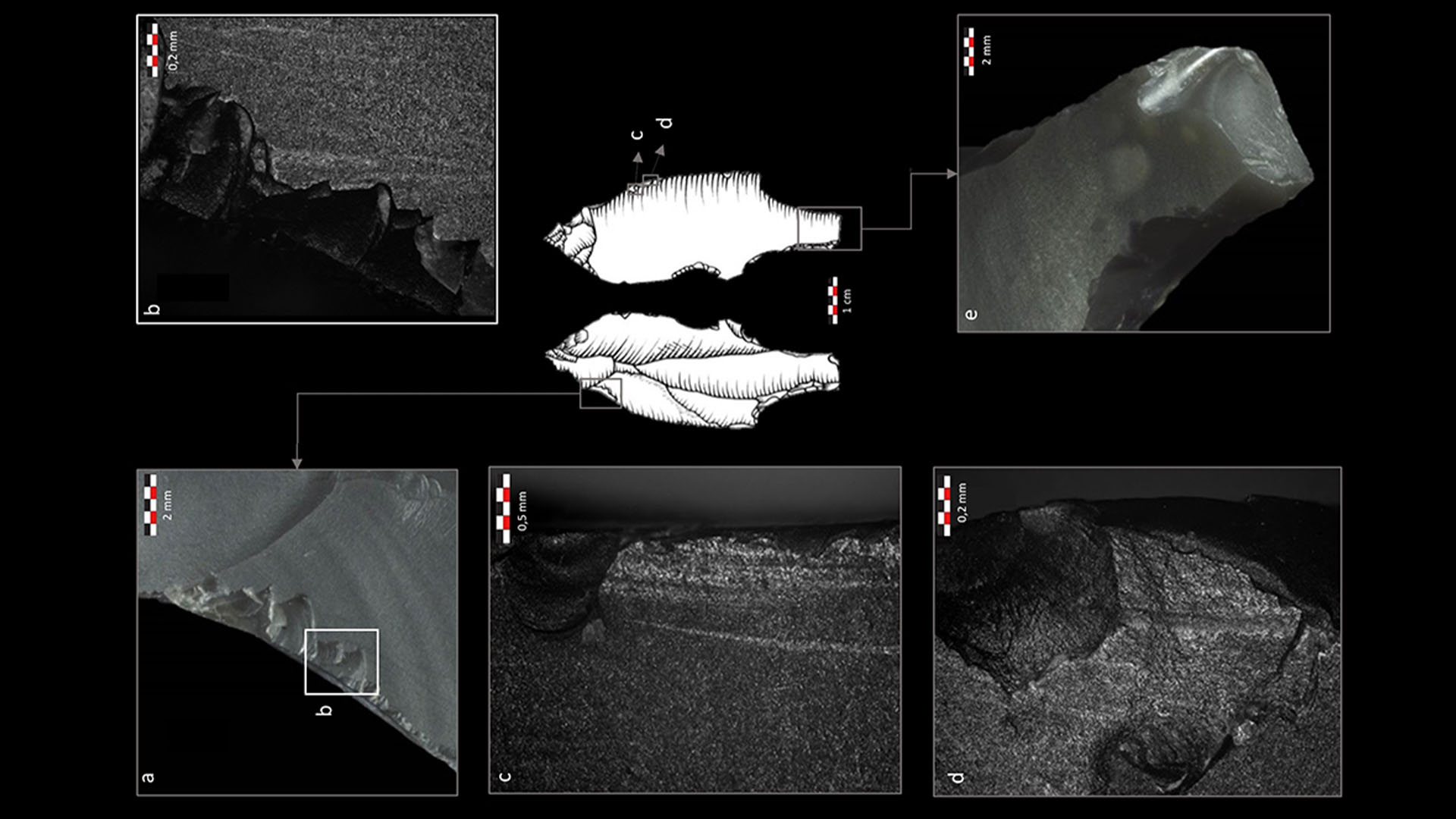Stone Age Europeans mastered spear-throwers 10,000 years earlier than we thought, study suggests
The researchers say their study pushes back the dates for the use of spear-throwers in Europe by more than 10,000 years.

Stone Age people in Belgium were hunting with spear-throwers more than 30,000 years ago — the earliest known evidence of such a weapon in Europe, a new study suggests.
After investigating more than 300 previously known flint artifacts found at the Maisières-Canal archaeological site in southern Belgium, a research team documented that 17 have minuscule fractures that indicate they were points for projectiles of some type.
"My conviction is that all of them are from spear-throwers," study first author Justin Coppe, an archaeologist at the University of Liège in Belgium, told Live Science.
According to the study, the flint points from the Maisières-Canal site, near the town of Mons and the Haine river, show that prehistoric people were hunting there with spear-throwers between 28,000 and 31,000 years ago; and that they apparently preferred these to other types of projectile weapons, such as thrown spears (javelins) and bows and arrows, he said.
However, not everyone is pleased with the research, arguing that it ignores the results of other studies on the topic.
Related: Weapons carved from human bone come from drowned land bridge between UK and Europe
Until now, the earliest direct evidence for spear-throwers in Europe were thought to be stone points from Placard Cave in southwestern France that date to between 17,000 and 18,000 years ago, the authors wrote. (The oldest evidence for bows and arrows in Europe, however, is from 54,000 years ago.)
Get the world’s most fascinating discoveries delivered straight to your inbox.
The new study on theMaisières-Canal flint artifacts, published Oct. 25 in the journal Scientific Reports, "pushes back the dates for spear-thrower use in Europe … by over 10,000 years," the authors wrote.
Spear-throwers
Spear-throwers, or atlatls, are seldom used these days because most hunters use firearms, but they were once a common weapon. They consist of a shaft with a hook or cup on the end that uses leverage to propel a spear-shaped dart at high speed. The darts are larger than arrows, which means they can do more damage when they hit, but they are smaller and much faster than thrown spears.
Coppe explained that the throwing and dart shafts may have been made of wood but have since rotted away. Only the flint projectile points remain.
Coppe and his colleagues at the University of Liège's Traceo Lab studied the ancient points by eye and with microscopes to determine their "archaeological fracture signal." Experiments with reconstructed weapons had shown that each projectile weapon type — thrown spear, atlatl dart and arrow — bent in different ways during flight, which resulted in distinctive fractures, he explained.
By comparing their fractures to those on the reconstructed weapons, the researchers determined that all 17 of the Maisières-Canal flint points had probably come from spear-throwers, he said.
Stone Age hunting
The development of projectile weapons would have had significant consequences for human evolution because it changed the diet and social organization of prehistoric groups, Coppe noted. But he cautioned that the choice of projectile weapons may have been based on traditional hunting methods rather than on any weapon's superiority. Bows and arrows, for example, were commonly used by solitary hunters, but thrown spears tended to be favored by hunters in bigger groups, he said.
Ludovic Slimak, an archaeologist at France's National Center for Scientific Research (CNRS) who wasn't involved in the study, said the research showed that projectile weapons were commonplace among Homo sapiens in Europe during the Upper Paleolithic period, after about 50,000 years ago.
But he was concerned that the authors of the paper were not familiar enough with or dismissed several other scientific studies on the topic. For example, it was not the case— as stated in the new study — that other studies around the world had considered only the size of the points, and not their fracture patterns, he said.
The new study was funded by the European Research Council and Belgium's National Fund for Scientific Research (FNRS).
Tom Metcalfe is a freelance journalist and regular Live Science contributor who is based in London in the United Kingdom. Tom writes mainly about science, space, archaeology, the Earth and the oceans. He has also written for the BBC, NBC News, National Geographic, Scientific American, Air & Space, and many others.




